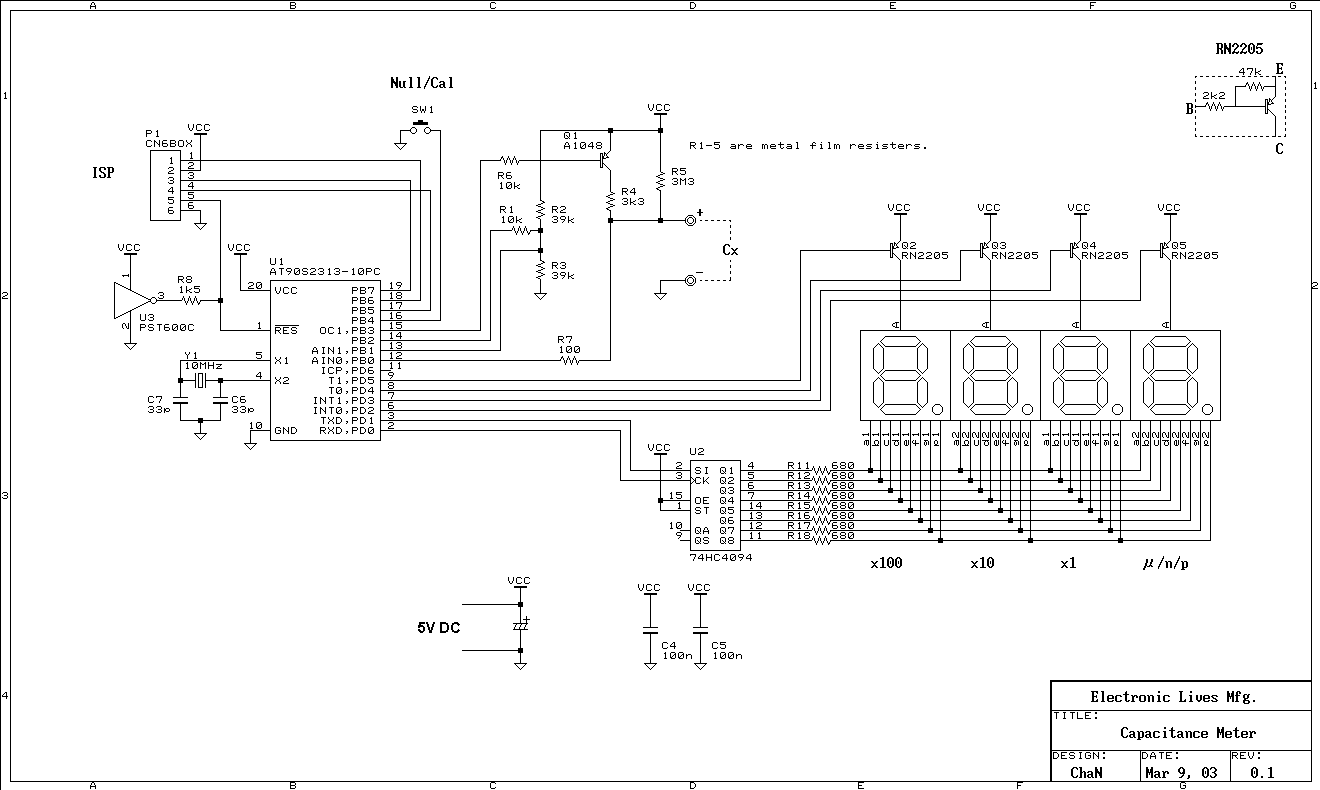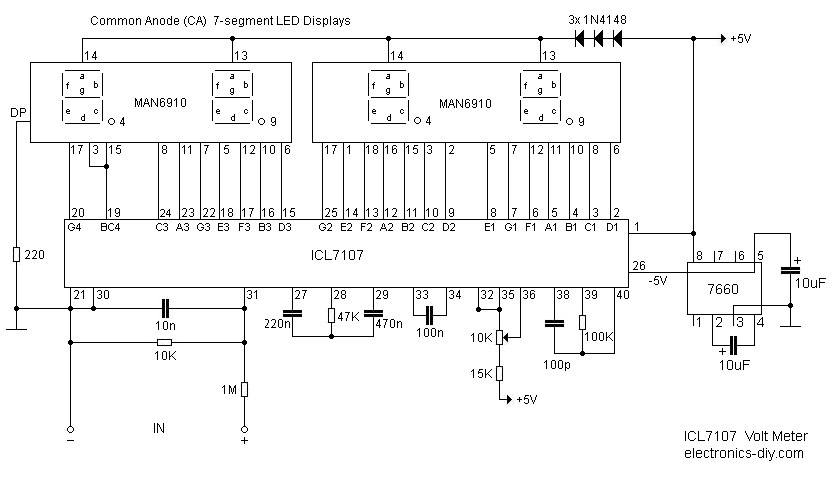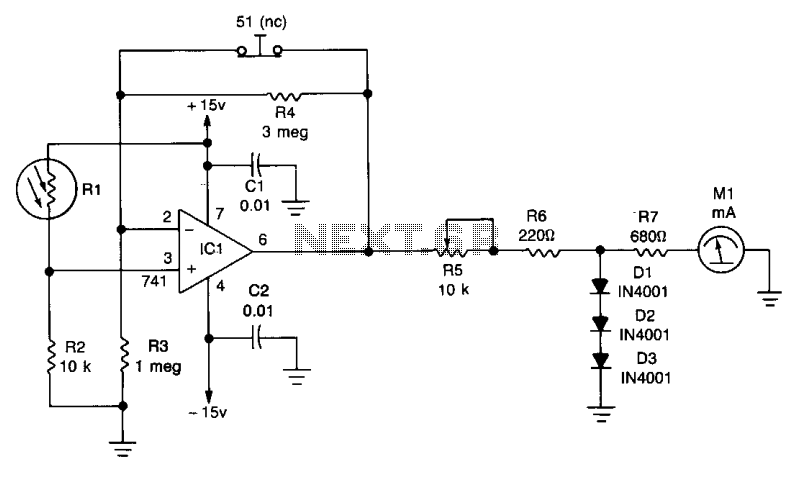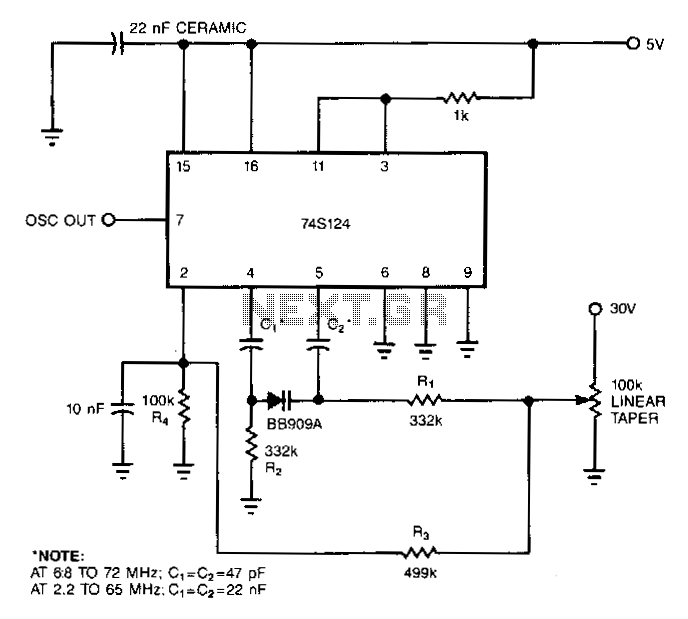
Digital Capacitance Meter

This is a simple capacitance meter which can measure capacitance value easy. There are some measurement methods for capacitance, at one time the capacitance was measured with a impedance bridge or a dip meter. Recently typical capacitance meters can measure capacitance and some additional characteristics from current vector by applying AC voltage to the Cx. Some simple capacitance meter use integration method that measureing transient response of the R-C network.
A capacitance meter is an electronic device designed to measure the capacitance of capacitors in various circuits. This specific capacitance meter employs a straightforward approach, allowing users to easily obtain capacitance values. Historically, capacitance measurements were conducted using impedance bridges or dip meters, which required a more complex setup and understanding of circuit theory.
Modern capacitance meters have evolved to incorporate advanced measurement techniques that can provide not only capacitance values but also additional characteristics derived from the current vector. This is achieved by applying an alternating current (AC) voltage to the capacitor under test, denoted as Cx. The meter analyzes the resulting current flow, allowing it to accurately calculate the capacitance based on the relationship between voltage and current.
In simpler capacitance meters, an integration method is often utilized. This method involves measuring the transient response of a resistor-capacitor (R-C) network. When a voltage is applied, the capacitor charges or discharges through the resistor, creating a time-dependent voltage change. By monitoring this response, the meter can determine the capacitance value. The integration method is particularly effective for low-capacitance measurements and is favored for its simplicity and reliability.
Overall, this capacitance meter represents a practical tool for both hobbyists and professionals, providing accurate measurements through established electronic principles. It is suitable for testing various types of capacitors, including electrolytic, ceramic, and film capacitors, making it a versatile instrument in electronic diagnostics and repair.This is a simple capacitance meter which can measure capacitance value easy. There are some measurement methods for capacitance, at one time the capacitance was measured with a impedance bridge or a dip meter. Recently typical capacitance meters can measure capacitance and some additional characteristics from current vector by applying AC voltage to the Cx.
Some simple capacitance meter use integration method that measureing transient response of the R-C network. 🔗 External reference
A capacitance meter is an electronic device designed to measure the capacitance of capacitors in various circuits. This specific capacitance meter employs a straightforward approach, allowing users to easily obtain capacitance values. Historically, capacitance measurements were conducted using impedance bridges or dip meters, which required a more complex setup and understanding of circuit theory.
Modern capacitance meters have evolved to incorporate advanced measurement techniques that can provide not only capacitance values but also additional characteristics derived from the current vector. This is achieved by applying an alternating current (AC) voltage to the capacitor under test, denoted as Cx. The meter analyzes the resulting current flow, allowing it to accurately calculate the capacitance based on the relationship between voltage and current.
In simpler capacitance meters, an integration method is often utilized. This method involves measuring the transient response of a resistor-capacitor (R-C) network. When a voltage is applied, the capacitor charges or discharges through the resistor, creating a time-dependent voltage change. By monitoring this response, the meter can determine the capacitance value. The integration method is particularly effective for low-capacitance measurements and is favored for its simplicity and reliability.
Overall, this capacitance meter represents a practical tool for both hobbyists and professionals, providing accurate measurements through established electronic principles. It is suitable for testing various types of capacitors, including electrolytic, ceramic, and film capacitors, making it a versatile instrument in electronic diagnostics and repair.This is a simple capacitance meter which can measure capacitance value easy. There are some measurement methods for capacitance, at one time the capacitance was measured with a impedance bridge or a dip meter. Recently typical capacitance meters can measure capacitance and some additional characteristics from current vector by applying AC voltage to the Cx.
Some simple capacitance meter use integration method that measureing transient response of the R-C network. 🔗 External reference





